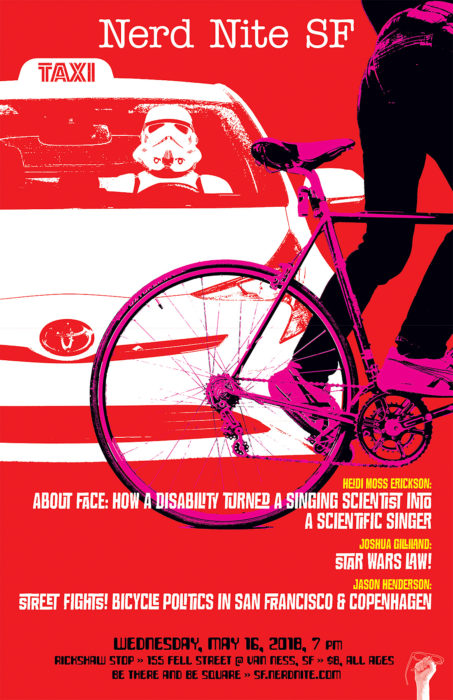Copenhagen has a lot more in common with San Francisco than most people think, says San Francisco State geography professor Jason Henderson.
While many look to the capital of Denmark as a Nordic idyll where the drin of bicycle bells outnumbers the blare of car horns, Henderson says it went through the same political fights to get there. “It’s not a magical unique place, actually, and that opens up the doors to possibility,” says Henderson, who spent a 2016 research sabbatical in Copenhagen and has a forthcoming book about the two cities.
Speaking at a recent Nerd Nite, Henderson gave some gears to grind as San Francisco heads into June 5 elections. Politics matter – how streets are configured, how much car ownership is taxed, how much space is allocated and protected for car parking and who decides these issues – and the daily habits of politicians matter, too.
“It’s important if we’re going to have not just a bicycle city but a truly sustainable transportation city,” he says. The problem? Few San Francisco politicians are really behind the bike as a method of transportation. Continue reading

